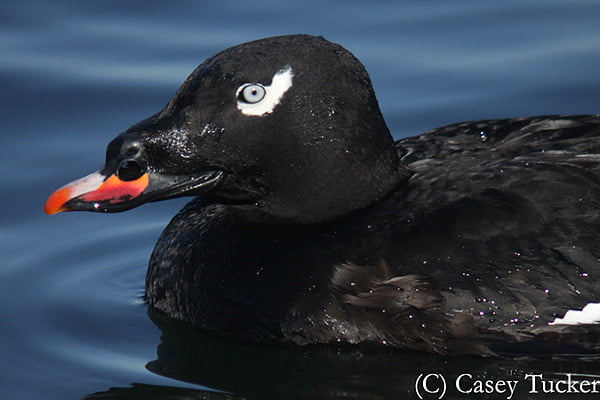Related Publications:
Anderson EM, Lovvorn JR. 2012. Seasonal dynamics of prey size mediate complementary functions of mussel beds and seagrass habitats for an avian predator. Mar Ecol Prog Ser 467:219-232. https://doi.org/10.3354/meps09943
Anderson, E. M., D. Esler, W. S. Boyd, J. R. Evenson, D. R. Nysewander, D. H. Ward, R. D. Dickson, B. D. Uher-Koch, C. S. VanStratt, and J. W. Hupp. 2012. Predation rates, timing, and predator composition for Scoters (Melanitta spp.) in marine habitats. Canadian Journal of Zoology 90: 42-50. https://doi.org/10.1139/z11-110
Anderson, E. M., and J. R. Lovvorn. 2011. Contrasts in energy status and marine foraging strategies of White- winged Scoters (Melanitta fusca) and Surf Scoters (M. perspicillata). Auk 128:248−257. https://doi.org/10.1525/auk.2011.10088
Anderson, E. M., J. L. Bower, D. R. Nysewander, J. R. Evenson, and J. R. Lovvorn. 2009. Changes in avifaunal abundance in a heavily used wintering and migration site in Puget Sound, Washington, during 1966–2007. Marine Ornithology 37:19–27. http://www.marineornithology.org/PDF/37_1/37_1_19-27.pdf
Anderson, E. M., and J. R. Lovvorn. 2008. Gray whales may increase feeding opportunities for avian benthivores. Marine Ecology Progress Series 360:291–296. https://doi.org/10.3354/meps07359
Anderson, E. M., J. R. Lovvorn, and M. T. Wilson. 2008. Reevaluating marine diets of Surf and White-winged scoters: interspecific differences and the importance of soft-bodied prey. Condor 110:285–295. https://doi.org/10.1525/cond.2008.8458
Dickson, R.D., D. Esler, J.W. Hupp, E.M. Anderson, J.R. Evenson, and J. Barrett. 2012. Phenology and duration of remigial molt in surf scoters (Melanitta perspicillata) and white-winged scoters (M. fusca) on the Pacific coast of North America. Canadian Journal of Zoology 90:932-944. https://doi.org/10.1139/z2012-061
Lewis, T.L., D. Esler, B.D. Uher-Koch, R.D. Dickson, E.M. Anderson, J.R. Evenson, J.W. Hupp, and P.L. Flint. 2017. Attaching transmitters to waterbirds using one versus two subcutaneous anchors: retention and survival trade-offs. Wildlife Society Bulletin 41:691-700. https://doi.org/10.1002/wsb.833
Uher-Koch, B.D., D. Esler, R.D. Dickson, J.W. Hupp, J.R. Evenson, E.M. Anderson, J. Barrett, and J.A. Schmutz. 2014. Survival of surf scoters and white-winged scoters during remigial molt. Journal of Wildlife Management 77:1189-1196. https://doi.org/10.1002/jwmg.774
